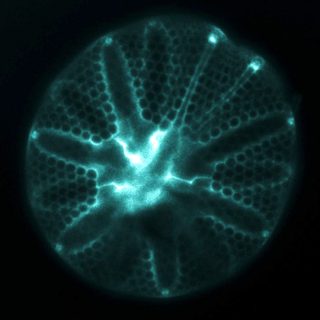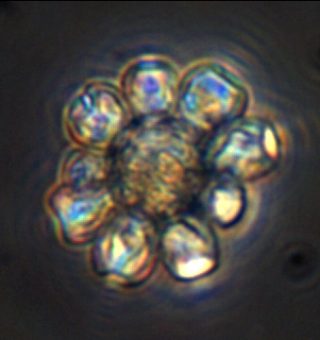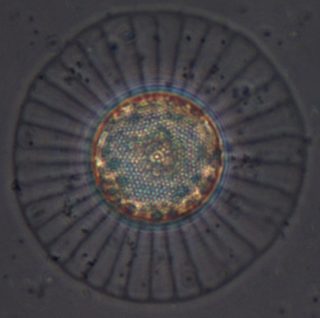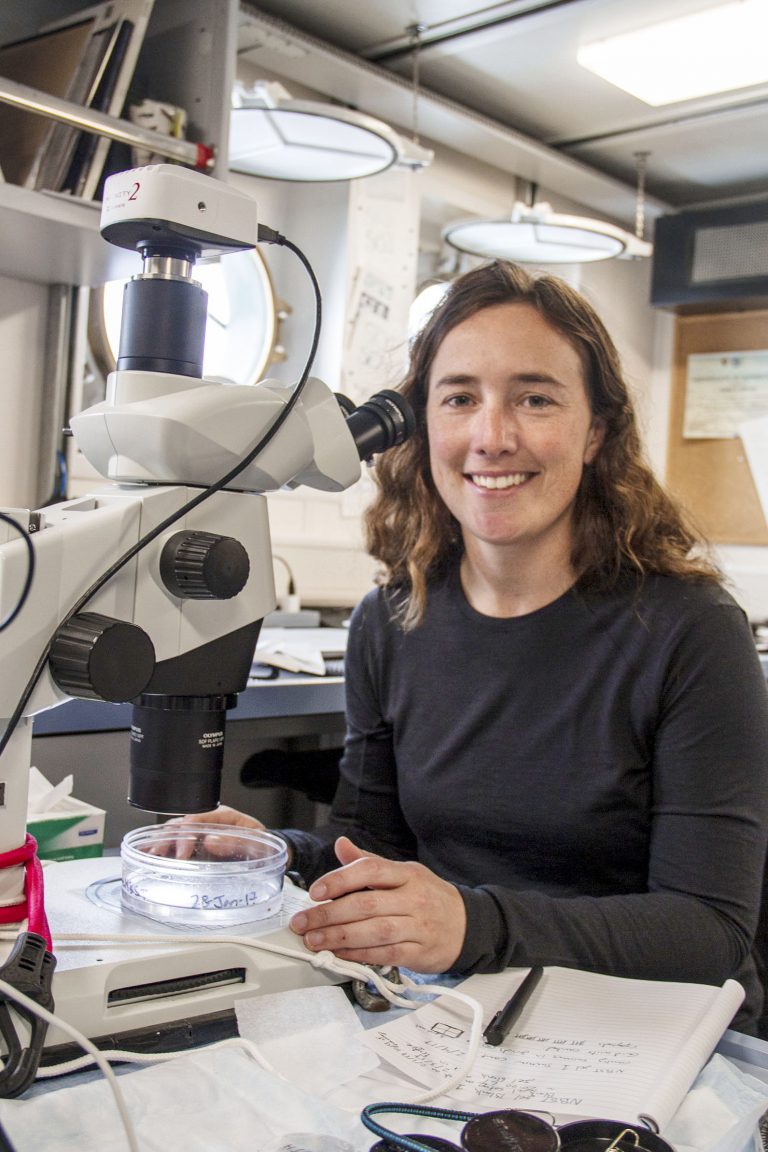As an undergraduate student, Colleen Durkin had no idea what to specialize in, but looking at a seawater sample through a microscope during a field-trip to Friday Harbor Labs changed that forever. “I suppose I had used a microscope before, but I can’t remember it,” she shares. “All I know is that to this day, I can recall what that particular sample looked like, with all of its copepods and cells swimming around.” Colleen has never looked back: since then plankton has been the driver of both her career and curiosity from Undergraduate to Doctorate in Oceanography.

Diatoms
Diatoms are Colleen’s favorite phytoplankton, with good reason. Not only are they tiny yet incredibly complex, they are also beautiful organisms. Diatoms are capable of creating a glass shell, which bestows an almost fantastical quality upon them. “The glass has nano-scale structures,” says Colleen as she examines the image of a star-like cell. “They look like a work of design, like art.” Beyond their evident beauty, diatoms have a monumental impact on everyday life on planet Earth.
Take a Breath and Thank Plankton
One out of every five breaths taken by any (and every) life form on the planet comes from a diatom. Diatoms are a kind of phytoplankton: that is, microscopic plants drifting in all bodies of water. They carry out photosynthetic processes, ultimately producing oxygen in the air we breathe.
Half of the oxygen available to us has been produced by phytoplankton – this means that every other breath comes from microscopic organisms in the ocean. Getting to know them better, their processes, their current status, and how a changing climate will affect them is essential to us, because they are essential to life.
Although scientists have a general idea of the kinds of phytoplankton that can be found in different regions of the world at certain periods of the year, they do not yet have a complete understanding of phytoplankton communities’ full distribution. Furthermore, there is still much to be learnt about the chemical processes each planktonic group carries out. Falkor’s current expedition will help contribute to creating a baseline, connecting diversity with the processes each organism is responsible for. Humans are changing the Earth rapidly, and we need to be able to monitor and understand ocean communities before long-term changes occur.



Sea to Space
This Sea to Space Particle Investigation will allow an unprecedented view of ocean processes by using tools both in the ocean and satellites in the sky. Looking at the ocean from specialized satellites it is possible to detect colors, which help inform the presence of certain types of particles drifting in the water. This expedition will provide key information connecting the satellites’ data capturing with real time in-situ measurements. As a result, experts will improve algorithms for these satellites, allowing for better global estimates of oceanic biochemical processes.
Phytoplankton is a major foundation to nearly all known forms of life. It produces oxygen, regulates the climate and sustains the marine food chain – a fundamental source of protein for humans. At the same time, when these organisms sink, they drag carbon down to the depths of the oceans with them, counteracting the accumulation of carbon dioxide in the atmosphere. This is Colleen’s primary interest: carbon export from the air to the ocean. She knows she will never grow tired of studying phytoplankton, immersing herself in the fascinating chemical labyrinth that these creatures build – often out of sight.

